By Robert Tate, Automotive Historian and Researcher
Images Courtesy of Ford Motor Company Archives/Robert Tate Collection, ClassicCar.com
Published 6.14.2023
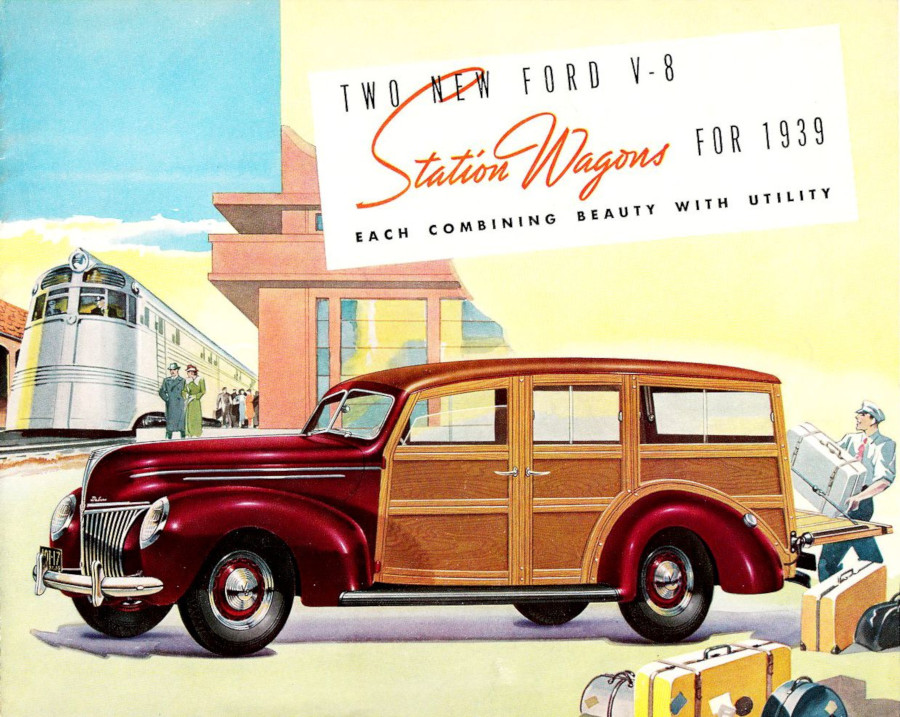 1939 Ford Woody Wagon sales material (Robert Tate Collection)
1939 Ford Woody Wagon sales material (Robert Tate Collection)
The other day, I remembered watching some old movies from the 1940s and looking at the original Ford Woody wagons that were driven in these classic pictures. Ford Motor Company’s woody wagons were nice-looking vehicles and, in the beginning, very popular with the public. Automotive historians have said that, by 1928, the station wagon had achieved enough popularity to warrant its addition to Ford’s line of vehicles.
In 1928, a Conestoga wagon was installed on a Ford chassis for the first time. By the 1930s, Ford became the leader in station wagon models, producing 3,800 units in a year. Some of the Ford woody parts were manufactured at the Iron Mountain plant and assembled by Murray Body Company in Detroit or Baker-Rawling in Cleveland, Ohio.
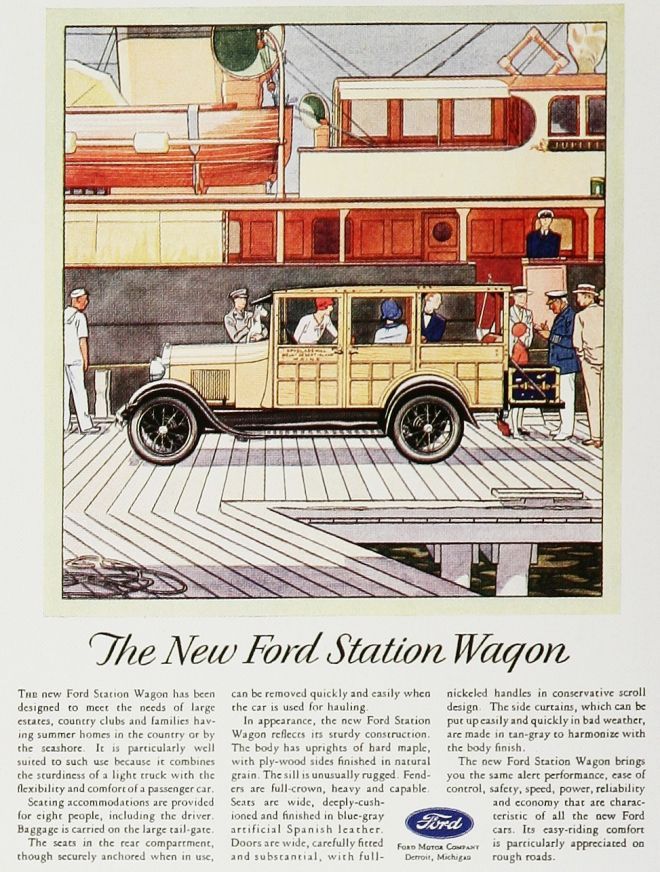 1928 Ford Woody Wagon ad (Robert Tate Collection)
1928 Ford Woody Wagon ad (Robert Tate Collection)
Today, all Ford and Mercury woody models have become rare and collectable – also very hard to find.
By 1939 and 1940, Ford offered two great-looking four-door, eight-passenger woody wagon models. The sales material for the 1939 Ford woody wagon said: “Two new Ford V-8 station wagons for 1939. Each combining beauty with utility.”
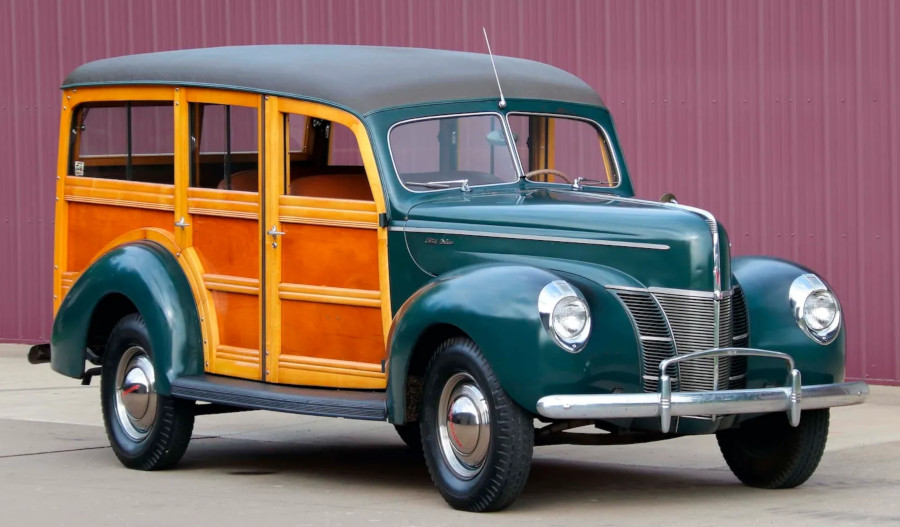 1940 Ford woody wagon (ClassicCar.com)
1940 Ford woody wagon (ClassicCar.com)
In 1940, the Ford Deluxe woody wagon sold for $950. The next year, Ford introduced a new body style. The Ford wagons proved very popular among both men and women, especially for sportsmen and hunters.
In 1941, Ford introduced the Mercury woody station wagon, which also became popular. Before America entered World War II in December 1941, Ford had offered unchanged woody wagons for the 1942 model year. The wood panels for 1942 were offered in a light or darker shade at the buyer’s request. The 1942 Mercury woody wagon models were priced expensively at $1,336, and only 900 units were made.
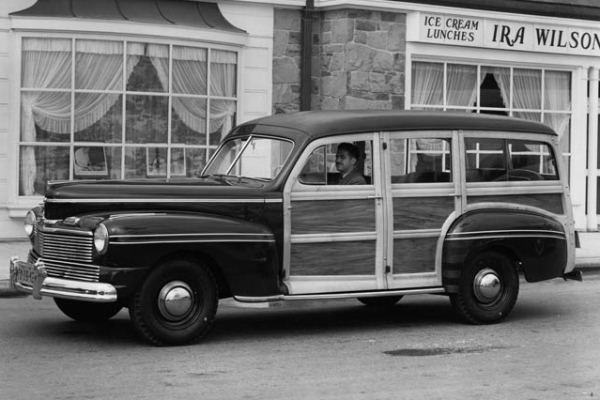 1942 Mercury Station Wagon (Ford Motor Company Archives)
1942 Mercury Station Wagon (Ford Motor Company Archives)
During the war, Ford and Mercury suspended manufacturing automobiles to produce tank engines, Jeep and amphibious bodies, and parts for B-24 bombers. After the war, Ford resumed making cars on July 3, 1945, when Henry Ford drove the first post-war civilian Ford model off the assembly line. Mercury followed on November 1, 1945. For the 1946 model year, Ford only offered its woody station wagon in a Super Deluxe series.
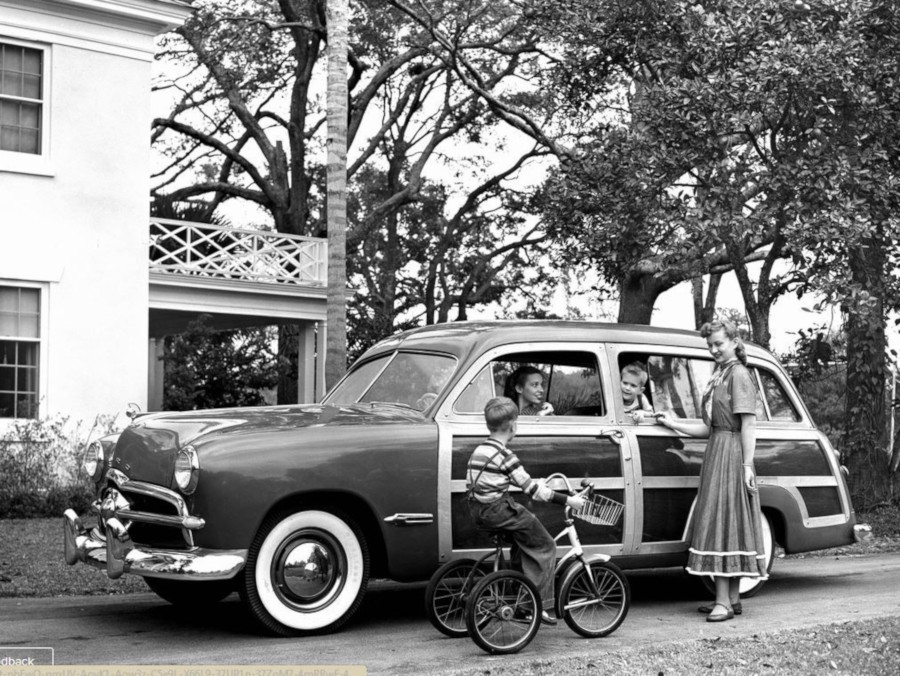 1949 Ford Woody (Ford Motor Company Archives)
1949 Ford Woody (Ford Motor Company Archives)
In 1947, Ford made the Super DeLuxe station wagon with a price tag of $1,975. Mercury’s one model for 1947 was unchanged from the previous year. The wood side trim was shared with the Ford body design, but the Mercury was priced at $2,207.
For 1948, Ford and Mercury continued to share the same wagon body design with no change in engine options or pricing. Ford also pushed white wall tires for the new model year. The great-looking 1948 Mercury woody wagons offered seating for eight passengers.
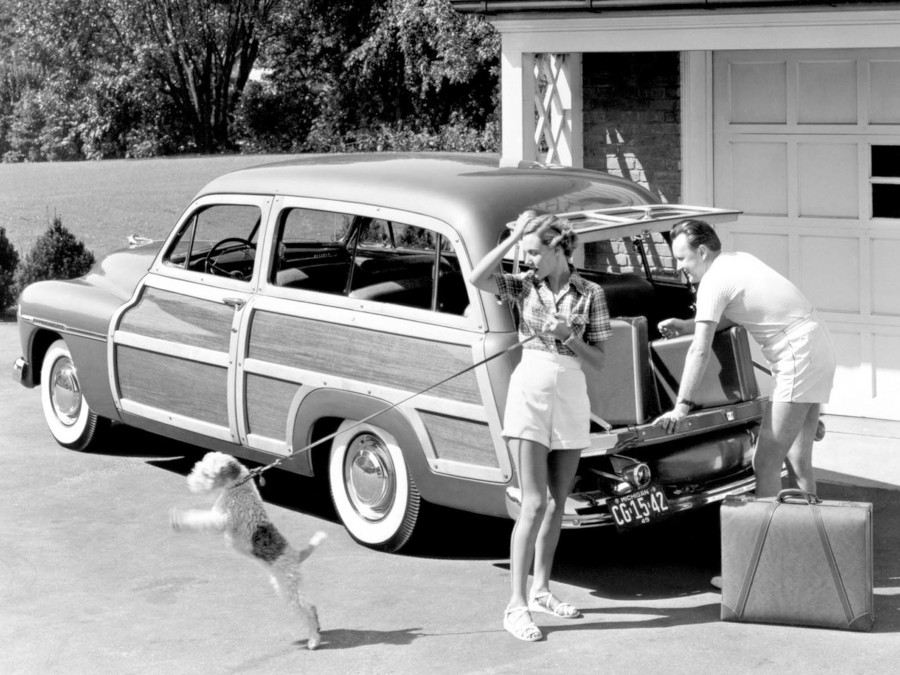 1949 Mercury woody wagon (Ford Motor Company Archives)
1949 Mercury woody wagon (Ford Motor Company Archives)
1949 marked a big change for automotive design. Ford offered a sleek, slab-sided vehicle that was a great looking model that the public thoroughly enjoyed. The 1949 Ford models were so popular that they were named “car of the year” by many media outlets. The woody wagons provided hardwood panels supported by a steel framework for added safety for the passengers and driver.
In 1949, Ford discontinued its four-door model and just made a two-door version only for that year. It also featured an all-steel roof design, which meant that, for the first time in Ford woody history, a headliner was manufactured in a Ford wagon. For 1949, Mercury also introduced an identical two-door, eight-passenger wagon which was manufactured at the Iron Mountain assembly plant. The 1949 Mercury woody wagon sold for $2,715.
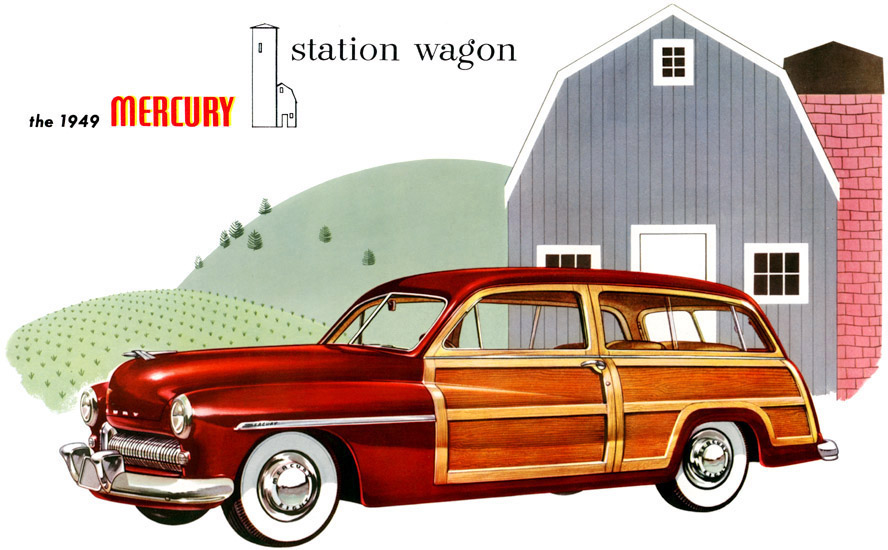 1949 Mercury woody wagon sales material (Robert Tate Collection)
1949 Mercury woody wagon sales material (Robert Tate Collection)
The 1950 Ford and Mercury woody wagons were unchanged, but still offered roominess with two-door and capacity for six passengers. For this year, the tailgate window area was framed in steel.
1951 was the final year that a structured woody station wagon would be offered by Ford and Mercury. The woody bodies for 1951 were made by the Ionia Manufacturing Company, since Ford had closed its Iron Mountain facility. The Ionia company had begun building woody station wagon bodies for General Motors in 1938 and then again after World War II. The Mercury body design was once again shared with the Ford model. For 1952, Ford offered an all-steel wagon for the consumer market for the first time.
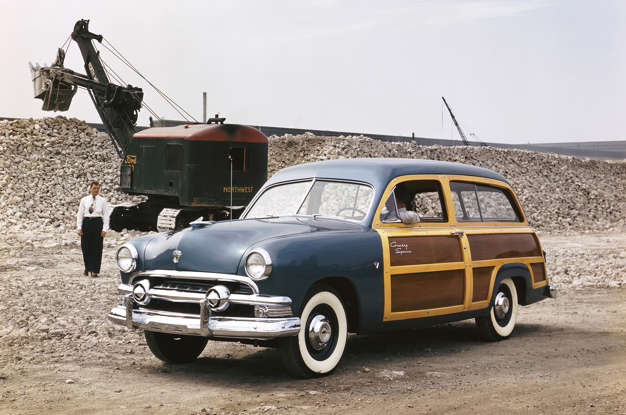 1951 Ford woody wagon (Ford Motor Company Archives)
1951 Ford woody wagon (Ford Motor Company Archives)
In conclusion, the Ford woody wagons were classics during their time, and some auto enthusiasts even used them to transport surf boards during the 1960s. Today, these models are still appreciated and admired by many Ford fans all over the world.
Bibliography
Dammann, George H. “Fifty Years of Lincoln Mercury.” Crestline Publishing, 1971.
Narus, Donald J. “Great American Woodies and Wagons.” Crestline Publishing, 1977.
Dammann, George H. “Illustrated History of Ford 1903-1970.” Crestline Publishing, 1970.
Kimes, Beverly Rae & Clark Jr., Henry Austin. “Standard Catalog of American Cars 1805-1942.” Krause Publications, 1989.



